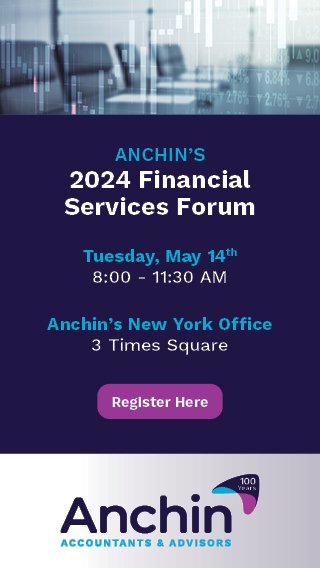Guest Opinion: Sales Practices Under the Microscope
/Dr. Jimmie Lenz, Principal with The Financial Risk Group
The use of sales incentives to influence the behavior of salespeople and how they sell to customers has a long history in the United States. For this, we have the National Cash Register (NCR) Company to thank, as it widely popularized the use of short-term incentives (STIs) in the late nineteenth century. Today, of course, a myriad of sales programs are used by countless companies to align agent and principal goals. Recent Nobel Prize winner Richard Thaler and his colleague Cass Sunstein have added to the body of thought around sales-related topics with their well-documented examination of “nudge” theory.
The underbelly of STIs was recently put on display when a federal judge ruled that shareholders can proceed with a lawsuit against Wells Fargo, alleging that management “repeatedly and brazenly” failed to serve the company’s best interests during the time that more than two million fake accounts were created. Clearly, if left unchecked, short-term incentives can lead to unethical and non-customer-oriented behavior (Zoltners, Sinha, and Lorimer 2013), which is why we were motivated to conduct research and write a forthcoming paper on sales practices.
Normally, an analysis that seeks to discover anomalies in a dynamic environment relies on established benchmarks. However, sales organizations typically find difficulty in developing accurate benchmarks, whether related to new or existing products or services. That’s because forecasts often have little, if any, basis and are often reflective of the wishes of the finance department or management. This leads to incentive plans that not only are unrealistic, given a particular environment, but also encourage behavior that is the antithesis of client-centric—a factor of which regulators are becoming increasingly cognizant. Organizations that utilize blanket sales goals across large geographic and/or client segments, irrespective of the nuances of the various segments, institutionalize this flawed thinking.
While there are a number of examples of the problematic application of STIs in the current environment, the issues have been brewing for some time. In the early 1990's, for instance, salespeople in the auto division of Sears were put on a straight commission payout, which resulted in unnecessary work being performed and Sears paying fines and customer compensation (Ganzel 1998). In more recent times, there have been other types of sales-based programs that have resulted in industry-wide settlements. In most of these cases, there were signs that something was amiss. So why weren’t the problems identified?
There appear to be several reasons:
- Hesitancy by management to look (what appears to be) a gift horse in the mouth;
- A lack of a solid scientific basis for forecasting sales;
- Little understanding of how to put detection measurement processes in place.
With respect to Wells Fargo, the report of the board’s independent directors found that “bad practices tended to disproportionately cluster [in areas] like Los Angeles and Arizona.” (Perhaps utilizing new methodologies, these bad practices might have been detected through objective analysis). The report also profiles one senior manager who moved from Los Angeles to Florida, replicating the same growth of low-quality accounts. One would expect this to be a very detectable pattern. But for firms that rely on staff or culture to identify and report such issues, the report notes that "managers also explicitly encouraged their subordinates to sell unnecessary products," illustrating that reliance on management to detect such issues may be misplaced.
While the news is fraught with examples of this problematic behavior, in some cases it is more basic for individuals covered by sales plans vs. commissions and bonuses. The achievement of sales thresholds utilized by some organizations is often the basis of retaining an individual’s job, and as prospect theory illustrates, a loss is felt much more significantly than a gain (Kahneman and Tversky 1979). In fact, noted researchers such as W. Edward Deming (1986) and Alfie Kohn (1993) have found that incentives are poor motivators that create no lasting commitment to an employer.
While the tenure and belief in paying salespeople according to incentive programs is not likely to change radically, we believe that there is a critical need to dynamically measure and understand the sales that are stimulated by these programs.There is also a need for a new methodology to assess expected behavior and the environment in which it should occur. That’s because changing sales and business dynamics require that behaviors be reassessed for evolving conditions. The result of the paper’s findings is that the advent of machine learning and other technologies can now make it possible to create more robust measurement tools. Additionally, advanced modeling techniques now allow for a better understanding of probable behavior based on a multitude of scenarios. The value, of course, is that once a specific unit’s expected performance is well understood, anomalies will become apparent and can be investigated.
Since incentives come in a variety of forms in addition to direct monetary compensation (including promotion opportunities, special recognition events and continued employment), we believe that the time has come for a fresh, holistic look at how sales professionals are incentivized. And while we don’t have all the answers on what a new sales model looks like, we think one thing is clear: it’s time for a meaningful change is sales practices.
Dr. Jimmie Lenz is a principal with The Financial Risk Group and an experienced executive, lecturer and scholar in the field of banking and capital markets. Starting his career as an equity trader over 25 years ago, he has held a number of senior management roles within the finance community and has numerous pending patents. (All views in this article are his own.)
References
Zoltners, A., Sinha, P., Lorimer, S. (2013) “Breaking the Sales Force Incentive Addiction: A Balanced Approach to Sales Force Effectiveness” Journal of Personal Selling and Sales Management, 32(2):171-186
Ganzel, R. (1998), “What’s Wrong with Pay for Performance?” Training, 35 (12), 34-40
Kahneman, D. and Tversky, A. (1979), Prospect Theory: An Analysis of Decision under Risk, Econometrica, 47 (2), pp.263-291, March 1979
Deming, W.E. (1986), Out of the Crisis: Quality, Productivity, and Competitive Position, Cambridge: Cambridge University Press
Chase, Charles (1993), “Ways to Improve Sales Forecasts” The Journal of Business Forecasting Methods & Systems vol. 12, No. 3
Kohn, A., (1993), “Why Incentives Plans Cannot Work” Harvard Business Review, 71 (5), 54-63
Hao, M., Dayal, U., and Keim, D. (2009), “Visual Analytics of Anomaly Detection in Large Data Streams”







